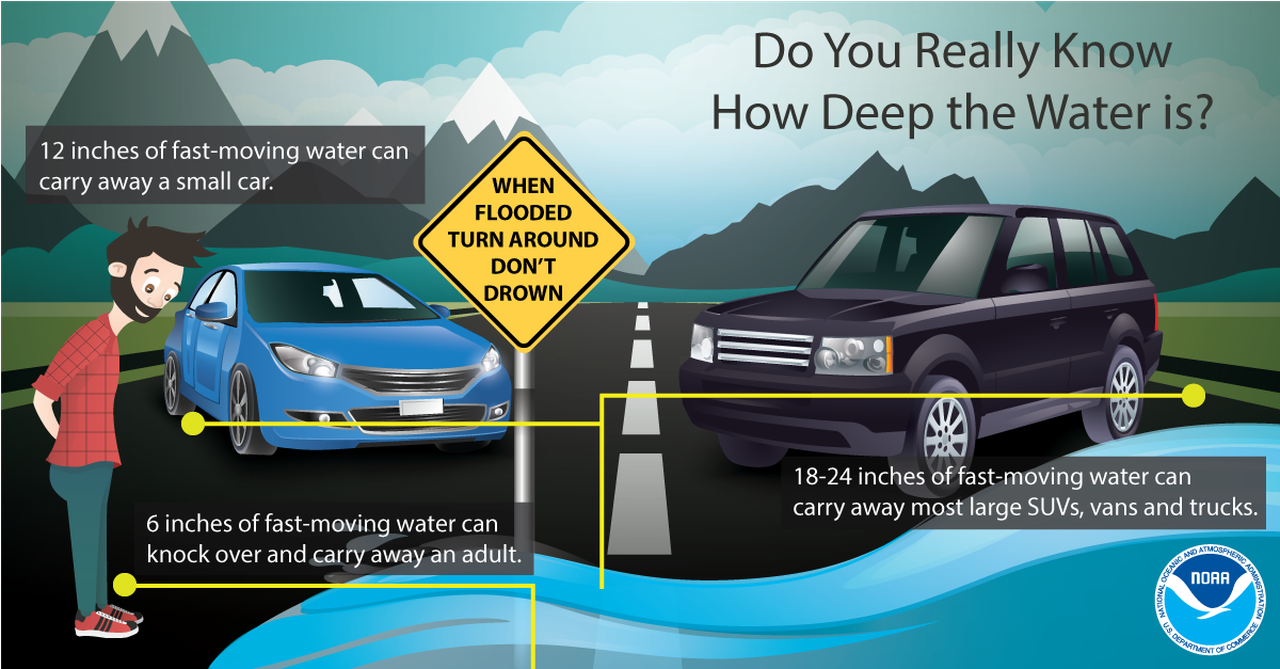What Is A Flash Flood? Understanding Flood Warnings And Alerts

Table of Contents
Defining a Flash Flood
A flash flood is a rapid, intense flood in a short period, typically within six hours of the causative event. This rapid onset is what distinguishes it from a regular flood, which develops more gradually over a longer time. While regular floods might result from prolonged rainfall or snowmelt, flash floods are often characterized by a sudden surge of water.
The volume of water involved can be immense, and the speed at which it rises and flows is extremely dangerous. Typical causes of flash floods include:
- Intense rainfall: Heavy downpours, especially in mountainous or urban areas with poor drainage, can quickly overwhelm water systems.
- Dam or levee failures: Structural failures can release massive amounts of water in a very short time, causing devastating flash floods downstream.
- Sudden release of water from melting snow or ice: Rapid melting due to warm weather can overwhelm drainage systems leading to flash floods.
Key Characteristics of Flash Floods:
- Sudden rise in water levels: Water levels can rise incredibly fast, leaving little time for reaction.
- Little to no warning time: This rapid onset is the defining feature, making preparedness crucial.
- High water velocity: The speed of the water makes it incredibly dangerous and destructive.
- Significant danger to life and property: Flash floods can cause serious injuries, fatalities, and widespread property damage.
Understanding Flood Warnings and Alerts
Effective communication is crucial during severe weather events. The National Weather Service (NWS) uses two key terms:
- Flood Watch: Conditions are favorable for flash flooding to develop. This is a preemptive alert; be prepared to take action if flooding occurs. Monitor weather reports closely.
- Flood Warning: A flash flood is happening or is imminent. This is an urgent alert; take immediate action to protect yourself and your property.
Various alert systems are in place to warn the public:
- National Weather Service (NWS) alerts: These are disseminated through various media, including television, radio, and the internet.
- Local emergency broadcasts: Local authorities use sirens, radio, and television announcements to provide urgent updates.
- Weather apps notifications: Many weather apps send push notifications directly to your smartphone, providing real-time warnings.
- Community warning systems: Many communities utilize reverse 911 systems or other methods to directly alert residents in affected areas.
Promptly heeding these warnings is paramount. Ignoring a flood warning can have fatal consequences.
Recognizing Flash Flood Indicators
While official warnings are vital, recognizing potential flash flood indicators can offer crucial extra time for preparation. Be aware of:
- Visual cues: Rapidly rising water levels in streams or rivers, overflowing streams, unusually muddy water, and standing water in areas where it's not normally found.
- Audible cues: The sound of rushing water, even from a distance, can indicate a developing flash flood.
Other Warning Signs:
- Swollen rivers and streams: A significant increase in water volume is a clear sign.
- Standing water in unusual areas: Water pooling in low-lying areas or places not typically prone to flooding.
- Rapidly flowing water: Increased water speed, even in smaller creeks, indicates a potential problem.
- Changes in water color or clarity: Muddy or discolored water suggests sediment runoff from heavy rainfall.
Safety Measures During a Flash Flood
Your safety is the top priority during a flash flood. If instructed to evacuate, do so immediately.
- Evacuate immediately when instructed: Obey all official evacuation orders without delay.
- Move to higher ground: Seek refuge in a sturdy building or find higher ground away from flood-prone areas.
- Never drive through flooded areas: Floodwaters can be deeper and faster than they appear; even a few inches of water can sweep a car away.
- Avoid downed power lines: Downed power lines present a serious electrocution risk.
- Stay informed through official channels: Continue monitoring weather reports and official updates for the latest information.
Post-Flash Flood Actions
After a flash flood, several crucial steps need to be taken:
- Report damage to local authorities: This helps assess the extent of damage and enables emergency response teams to allocate resources effectively.
- Avoid contact with floodwaters: Floodwater is often contaminated with sewage, chemicals, and other hazardous materials.
- Inspect buildings for damage: Check for structural damage, leaks, and potential hazards.
- Seek professional assistance for repairs: Do not attempt major repairs without professional help, especially with electrical systems.
Conclusion
Understanding flash floods and responding effectively to warnings and alerts is crucial for survival. By being vigilant, heeding warnings, and following safety guidelines, you can minimize the risk to yourself and your loved ones. Developing a comprehensive flash flood preparedness plan, including evacuation routes and emergency supplies, is essential. Learning about flash flood safety isn’t just about knowledge; it’s about protecting your life and the lives of those around you. Make a plan today to stay safe during a flash flood.

Featured Posts
-
 Southern Vacation Hotspot Responds To Negative Safety Rating After Shooting
May 25, 2025
Southern Vacation Hotspot Responds To Negative Safety Rating After Shooting
May 25, 2025 -
 Overnight Disasters 17 Celebrities Whose Careers Imploded
May 25, 2025
Overnight Disasters 17 Celebrities Whose Careers Imploded
May 25, 2025 -
 Stijgende Kapitaalmarktrentes Euro Boven 1 08
May 25, 2025
Stijgende Kapitaalmarktrentes Euro Boven 1 08
May 25, 2025 -
 Serbian Models And Kyle Walker A Milan Night Out Following Wifes Return Home
May 25, 2025
Serbian Models And Kyle Walker A Milan Night Out Following Wifes Return Home
May 25, 2025 -
 Bbc Radio 1 Big Weekend 2024 Lineup Jorja Smith Biffy Clyro Blossoms And More
May 25, 2025
Bbc Radio 1 Big Weekend 2024 Lineup Jorja Smith Biffy Clyro Blossoms And More
May 25, 2025
Latest Posts
-
 Atletico Madrid In 3 Maclik Yenilmezlik Serisi
May 25, 2025
Atletico Madrid In 3 Maclik Yenilmezlik Serisi
May 25, 2025 -
 Atletico Madrid In 3 Maclik Hasreti Zaferle Son Buldu
May 25, 2025
Atletico Madrid In 3 Maclik Hasreti Zaferle Son Buldu
May 25, 2025 -
 Deplasmanda Geriden Gelen Atletico Madrid Zorlu Maclar Ve Zaferler
May 25, 2025
Deplasmanda Geriden Gelen Atletico Madrid Zorlu Maclar Ve Zaferler
May 25, 2025 -
 Atletico Madrid In Geriden Gelip Kazanma Stratejileri
May 25, 2025
Atletico Madrid In Geriden Gelip Kazanma Stratejileri
May 25, 2025 -
 Geriden Gelen Atletico Madrid Taktiksel Analiz Ve Basari Oeykuesue
May 25, 2025
Geriden Gelen Atletico Madrid Taktiksel Analiz Ve Basari Oeykuesue
May 25, 2025
